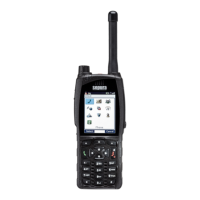
Do you have a question about the Sepura SC20 series and is the answer not in the manual?
| Operating Temperature | -30°C to +60°C |
|---|---|
| Frequency Bands | 380-430 MHz |
| GPS | Integrated GPS, GLONASS |
| Bluetooth | Bluetooth 4.0 |
| Security | TEA1, TEA2, TEA3 |
| Transmit Power | 1W, 3W, 10W |
| Battery Life | Up to 14 hours (standard battery) |
Crucial safety guidelines and regulatory information for product use.
Instructions on how to check the radio's remaining battery level.
Details on charging methods, first-time charging, and battery chargers.
Step-by-step guide for correctly installing and removing the radio's battery.
Information on the importance and benefits of using genuine Sepura approved batteries.
How to use the dedicated Emergency Button to initiate an Alarm Call.
Procedures for fitting and removing the radio's antenna correctly.
Steps to safely power the radio on and off using the designated key.
How to lock and unlock the radio's keypad to prevent accidental use.
Setting up silent alarms for sensitive environments without audible or visual alerts.
Using the Live Microphone for hands-free communication during emergency calls.
Step-by-step process to initiate an emergency Alarm Call using the Emergency Button.
How to identify and manage incoming Alarm Calls and cancel initiated ones.
Making an Alarm Call automatically upon powering the radio on.
Step-by-step guide to selecting and attaching to a specific talkgroup.
Descriptions of various voice and data call types supported by the radio.
Making, receiving, and clearing group calls using the PTT button.
Making and receiving private calls in half-duplex and full-duplex modes.
Procedures for typing characters, deleting, and entering special symbols.
Logging onto the network using user ID and PIN for authentication.
Direct radio-to-radio communication without network infrastructure.
Procedures for accepting, rejecting, or acknowledging Callout alerts.
Using motion sensors to detect incapacitation and initiate an emergency alert.
Enabling the feature for users working alone to signal their safety status.
How to determine and display the radio's current geographical location.
Searching for, pairing, and connecting Bluetooth audio devices like headsets.
Entering, changing, and unlocking the radio's PIN for security.
Understanding and using E2EE for secure voice and data communications.
Deleting sensitive cryptographic keys to prevent security compromise.